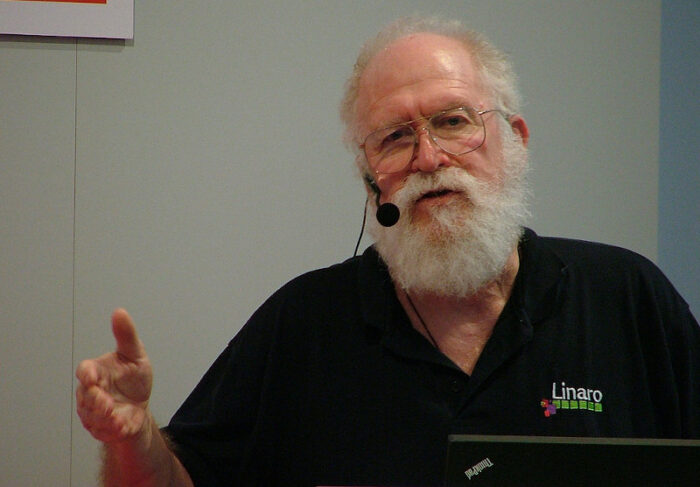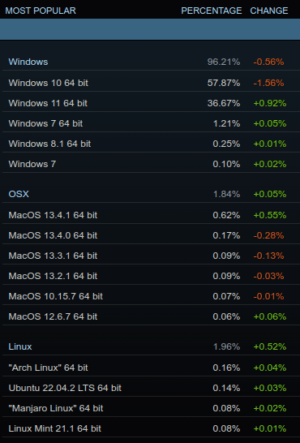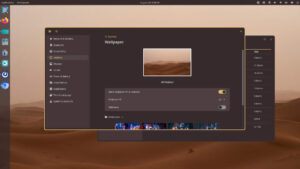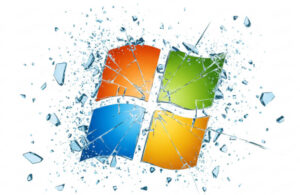In this week’s news roundup, our Christine Hall tells you what she thinks has gone wrong at Red Hat, and again tries to wrestle Elon Musk to the floor. In between, she covers some more of this week’s FOSS news.

It’s been another crazy week here in the FOSS world. And while we covered a lot of stories in-depth this week, some we didn’t.
Here are our news briefs on the stories that didn’t get the entire FOSS Force treatment this week:
‘Maddog’ Weighs-in on Red Hat
In an article worth reading posted Sunday on the Linux Professional Institute’s blog, Jon ‘maddog’ Hall (no relation) weighed-in on the recent fuss over Red Hat’s recent decision to lock down the code for Red Hat Enterprise Linux, which has been problematic for projects such as Rocky Linux and AlmaLinux that have been counting on availability to RHEL code in order to build RHEL clones.
Most of Hall’s article was sort of a history of computing and software development as seen through his eyes, from the 1960s to now, and was mainly a long, roundabout way to explain how we got to here from there. A big reason for the article, I think, is to let younger readers know that Red Hat hasn’t really stirred-up anything new with this latest chapter in the history of computing. We’ve been this way before.
Hall is an old school believer in business and industry, and doesn’t think there’s anything wrong with Red Hat’s moves to lock down their code, nor does he think that their efforts to keep their customers from redistributing Red Hat’s code is in violation of the GPL.
I’ve been reading similar from a lot of other people recently, including from many Red Hatters.
I actually agree with much that Hall and others who are standing behind Red Hat are saying — although I’m not as sure as others that not allowing your customers the right to redistribute GPL code that you’ve distributed to them is something that can be done.
Even if it can be done, I still have issues with Red Hat’s actions for other reasons that I feel are more important than software licensing.
It seems to me that when Red Hat took control of CentOS back in the day, gave CentOS devs space in its offices to work, and actually helped CentOS’s devs make clones of RHEL that would then be freely distributed to anyone who wanted to run RHEL without having to purchase a support subscription — that sent a message to enterprise users (and it was the enterprise that mainly used CentOS when it was a downstream clone of RHEL) that Red Hat was fine with folks using their technology as CentOS, that Red Hat essentially thought there was plenty enough to go around for everybody.
And there was, and still is.
I think that’s precisely the message that Jim Whitehurst, Red Hat’s president and CEO back in those days, wanted to send, because I think that’s what he believed. It was “the open-source way.” It was the way things were done at Red Hat. It was part of Whitehurst’s vision for the company, and for the greater open-source community.
After Whitehurst was gone and Red Hat pulled the rug out from underneath CentOS, we were not witnessing a desperate move by a desperate company. Red Hat was having a banner year financially. It was and is a well fed company. It’s just that its sole stockholder wants more.
In my opinion, most of what my friend ‘maddog’ and others are saying is 100% true. I just don’t think they’re seeing the whole story, and because of that, they’re missing the point.
For longer than a decade, Red Hat led entire industries to believe that it supported and actually encouraged the use of the RHEL clones. If that wasn’t the case, then why was Red Hat putting so much work into getting downstream CentOS developed and shipped in a timely fashion?
LMDE 6, Mint 21.3, and a EDGE ISO for 21.2
For those you you who like Mint flavored Debian, Linux Mint’s head honcho Clement Lefebvre said in Wednesday’s monthly newsletter that work has begun on the next Linux Mint Debian Edition, which will be codenamed “Faye.”
“It will come with all the features and changes introduced in Linux Mint 21.2,” he said. “There is no ETA for its release. Once everything is ready we’ll take the opportunity to work on additional features and see how much we want to further reduce the gap in functionality between Linux Mint and LMDE.”
Lefebvre also said that an “edge” ISO is in the works for Mint 21.2, Mint’s latest and greatest which was released on July 16. Mint sometimes provides “edge” ISO images for its latest releases, which typically ship with newer components in order to support the most modern hardware chipsets and devices. Mint’s edge images are primarily released for users who can’t boot or install using the standard ISO. Generally, they aren’t as stable and may not support as many proprietary drivers.
Expect Mint 21.3 to be released sometime around Christmas, he said.
“We’ve got many exciting ideas, I’m sure some of the cool new features we have in mind will be implemented, but we want to prioritize some long-term aspects and dedicate some of our time to them,” he explained.
“Namely, we want to update our ISO production tools and fix Secure Boot. We also want to spend time on studying the pros and cons of Wayland and to assess the work needed in its potential adoption. Last but not least we’re keeping an eye on Ubuntu, their increased focus on Snap, the quality of their 24.04 package base and what this means for us going forward.”
Linux Use Beats Mac on Steam

A few weeks back there was a lot of brouhaha online, including here on FOSS Force, when Statcounter reported that desktop Linux usage had hit an all time high of 3.08%, which still put Linux behind “unknown OS,” but hey, hitting that 3% mark felt like hitting the land of milk and honey when you compare this to what Tux’s numbers looked like just a couple of years ago.
Even better, according to some, that number would’ve been 7.23% had ChromeOS’s 4.15% been counted as Linux, with some folks saying it should’ve been and other folks giving that a thumbs down.
In case you don’t know, ChromeOS kinda sorta runs the Linux kernel, but it’s been modified, and some people just plain don’t want to call it Linux.
Anyway, I wander.
To get to the point, this week the gaming folks at Valve came out with some figures from their Steam platform indicating that two years after finally passing the 1% mark in the gaming arena, the use of Linux on Steam in July surpassed the use of MacOS, which means that Linux no longer occupies the basement apartment in the gaming world anymore. Mac now lives there now and has to worry about the floods, with Linux now occupying the ground floor. Windows remains upstairs, in the apartment with best view.
According to Valve’s July numbers, 1.96% of Steam’s users are running Linux compared to 1.84% running MacOS (or OSX). What’s the top Linux distribution to be used on Steam? That would be Arch, followed closely by Ubuntu.
Even though Microsoft’s numbers went down by more than a half-percent between June and July, with 96.21% of gamers using Windows, Redmond’s not likely to feel any pressure from Linux or Apple anytime soon, at least when it comes to gaming.
Oh, and about that 3.08% of overall operating system usage that Statcounter was reporting a few weeks back … that number has since increased to 3.13%, and ChromeOS’s numbers have decreased to 3.24%. Does this mean that we’re likely to see use of traditional Linux surpass use of ChromeOS in the near future?
Stay tuned…

Musk’s 15 Minutes²
Back in the 1960, a platinum blonde artists named Warhol predicted that in the future everybody in the country, if not the world, would have fifteen minutes of fame. Since then, that prediction has turned out to be pretty much true and has happened enough times that we’ve been able to discover the nuances under which that works.
For example, if you’re a billionaire with $40+ billion to spend on a media platform, you still only get fifteen minutes, but if you know how to play it you can get 15 minutes numerous times.
For example, a couple of weeks back, Elon Musk bought himself another fifteen minutes of fame simply by changing the name of the social network that’s brought him fame on a slew of occasions in the last year or so, simply by changing its name from Twitter to ‘X’ (without the quotes). Then last week, he got another fifteen minutes (and a mention in last week’s FWIR) when he stole the Twitter handle @X from Gene Hwang, who’d had the handle since 2007, with means almost since Twitter came into being. In typical billionaire fashion, Musk didn’t offer to compensate Hwang for the Twitter handle he purloined (even though single digit Twitter handles have fetched as much as $50K in the past) — although he did offer some “merch,” which was probably some Twitter branded stuff that needs to be gotten rid of since Twitter is no longer a brand.
Then this week, Musk gets another 15 minutes practically for free, again on the back of his rebranding of the site formally known as Twitter (I stole that from Scott Hanselman, BTW). It seems that Apple has always had a rule to no app can be listed in the iPhone app store unless it has a name that is at least two characters long. I’m not sure why they had that rule (even though it might have been in the article I read about it — honestly, I didn’t care that much), but they did have that rule, and for a while there they were evidently not allowing the rebranded Twitter app to be available in the app store.
Eventually they relented, because of course they did, making the world safe for X, and all of the people who want to have the X app on their phones.
Well, that does it for this week. Time to get ready for Monday morning, when once again we’ll start pushing that rock up the hill.
In the meantime, have fun…and may the FOSS be with you.
Christine Hall has been a journalist since 1971. In 2001, she began writing a weekly consumer computer column and started covering Linux and FOSS in 2002 after making the switch to GNU/Linux. Follow her on Twitter: @BrideOfLinux












Jim Whitehurst was actually the fourth CEO of Red Hat. One of the things about Red Hat is that each CEO took it to another level.
When Red Hat took over CentOS there were people in Red Hat who advocated for that because they believed it was the sensible thing to do. However as time went on they seem to feel that helping a clone did not give them the benefits they desired and the business model changed with the purchase by IBM.
I do not believe you fully understood my piece. Part of my article was to remind people how the development of software changed from users developing software that they were going to use themselves (mirrored by the early days of Free Software) to the day of “professional software developers” who expect to be paid for their work.
The second part of the article was to remind people that IBM has supported Free Software many times in the past.
The third part of the article was to remind people exactly what started Free Software, which was RMS not having the source code to fix his distribution.
To my knowledge Red Jay/IBM did not say to any customer that you have to stop using RHEL or it’s clones. Current customers can go on using that code until the cows come home.
Red Hat/IBM simply said that unless you buy a license for every one of your RHEL systems you were not going to be an IBM/RHEL customer.
Then a whole bunch of people and companies spoke up about how they were going to create more RHEL clones and I simply asked the question:
“Why don’t you create a better RHEL?”
Crickets
Hi ‘maddog’!
Correct me if I’m wrong, but I believe that Whitehurst was the third CEO/President at Red Hat, and the one who by far spent the most time in that role. Co-founder Bob Young was first who was followed in 1999 by Matthew Szulik. Whitehurst was recruited as his replacement after he resigned.
I pretty much understood your post as you state it above. This article wasn’t so much to argue your points as to make another point that has been completely lost in this discussion and which is very important to understanding the dynamics in play here, and that is that the huge market for unpaid RHEL clones is a market that was in large part created by Red Hat, which gave its blessing to enterprise use of free RHEL when it took CentOS under its wing and publicly aided and abetted CentOS’s cloning of RHEL version after version, and paid many of the expenses (and developed software) for doing so.
For Mike McGrath, who I suspect was always against Red Hat’s involvement with CentOS as a downstream project, to paint nearly 100% of the web hosting industry, as well as a large number of other enterprise businesses, as sleazy freeloaders for relying on old CentOS, and now AlmaLinux and Rocky Linux, when Red Hat encouraged the practice for a decade or more, is disingenuous.